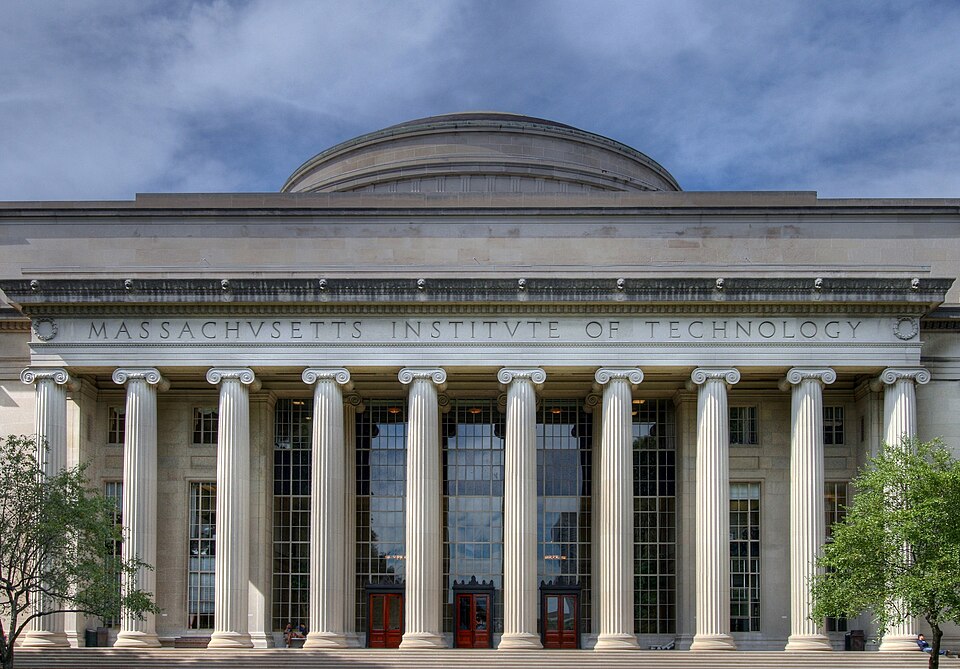Durham University acceptance rate is around 41%, and offer rate can reach 60%-70%, denoting that it is relatively easier to get into compared with other top universities in the UK. Before making up your decisions, let’s check more about its rankings, fees, and other aspects together!
About Durham University
Founded by an Act of Parliament in 1832, Durham University (legally the University of Durham), is the third-oldest university in England, only after Oxford and Cambridge. As a member of the Russel Group universities, Durham University ranked 89th in the QS World Rankings 2025 and 5th by Times and Sunday Times Good University Guide 2025.
The University of Durham has long been recognized by its excellence in teaching, leaning, and research, with nearly 2,000 dedicated and extraordinary staff providing world-class education. Every year, over 30,000 students in and outside UK are attracted and applying to study here. The Durham University acceptance rate is around 41%, offering a balance between competitiveness and academic excellence.
Durham University Ranking
Durham University world ranking has long been top 100 for many years in the QS World University, and the newest ranking in 2025 is 89th, which signifies its global impact and academic excellence. Notably, it also ranked 19th for sustainability and 65 for employer reputation by QS 2025.
When compared with other UK universities, Durham University is usually listed top 10 whether by The Guardian or The Comprehensive University Guide. Detailed Durham University ranking from 2023 to 2025 are as follows:
| Year/Ranking | QS World | The Times UK | The Guardian | The Complete University Guide |
|---|---|---|---|---|
| 2025 | 89 | 5 | 6 | 7 |
| 2024 | 78 | 7 | 7 | 8 |
| 2023 | 92 | 6 | 6 | 6 |
Durham University Acceptance Rate
Getting to know Durham University acceptance rate is crucial if you plan to study here. Acceptance rate represents the percentage of students admitted to a university to the number of students who applied; an offer rate refers to the percentage of students who received offers and the number of students who applied.
According to official statistics by Durham University, the offer rate for the 2022/23 cycle is 67% for undergraduate study, meaning that 67 students can receive offers in every 100 who applied Durham University undergraduate programs.
Applicants in 2022/23 Cycle:
- Applications: 31,325
- Offers: 21,055
- Offer Rate: 67%
Home/Islands Applicants:
- Applications: 21,010
- Offers: 13,785
- Offer Rate: 66%
Overseas/EU Applicants:
- Applications: 10,315
- Offers: 1,940
- Offer Rate: 77%
Durham University Acceptance Rate Vs Other UK Universities
When compared with the acceptance rate of other top universities in the UK, you will get to know what the 67% Durham University acceptance rate stands for. Although not the highest, Durham University acceptance rate is only after the University of Southampton and the University of Bristol among listed universities, making it one of the easiest top universities to get into in the United Kingdom.
| University | QS 2025 | Acceptance Rate |
|---|---|---|
| Imperial College London | 2 | 11%-14% |
| University of Oxford | 3 | 16% |
| University of Cambridge | 5 | 16%-18% |
| University College London | 9 | 25% |
| University of Edinburgh | 27 | 9% |
| University of Manchester | 34 | 56% |
| King’s College London | 40 | 13% |
| London School of Economics and Political Science | 50 | 9% |
| University of Bristol | 54 | 67% |
| University of Warwick | 69 | 14% |
| University of Glasgow | 78 | 22% |
| University of Birmingham | 80 | 13% |
| University of Southampton | 80 | 84% |
| University of Leeds | 82 | 44-77% |
| Durham University | 89 | 67% |
Durham University Courses
Durham University courses are available in 300+ undergraduate and taught postgraduate degrees. The University provide research-led education, aimed to challenge and inspire students with emphasis on potential. Popular courses are Law, Finance, Psychology, Economics, Business, and Computer Science.
| Course | A Level | BTEC | International Baccalaureate | Fees for International Students |
|---|---|---|---|---|
| Law | A*AA | D*DD | 38 | £28,250 per year |
| Finance | AAB | DDD | 36 | £29,500 per year |
| Psychology | AAA | DDD | 37 | £33,250 per year |
| Economics | A*AA | D*DD | 38 | £29,500 per year |
| Business | AAB | DDD | 36 | £29,500 per year |
| Computer Science | A*AA | D*DD | 38 | £35,000 per year |
Durham University Term Times
Durham University term times are divided into three: Michaelmas Term, Epiphany Term, and Easter Term. Every department will conduct teaching and research activities according to terms, and students are also expected to “Keep Terms.”
Academic Year 2025-2026:
| Term | Start | End |
|---|---|---|
| Summer vacation 2025 | 28-Jun-25 | 28-Sep-25 |
| Induction Week 2025 | 29-Sep-25 | 5-Oct-25 |
| Michaelmas Term 2025 | 6-Oct-25 | 12-Dec-25 |
| Christmas vacation 2025-2026 | 13-Dec-25 | 11-Jan-26 |
| Epiphany Term 2026 | 12-Jan-26 | 20-Mar-26 |
| Easter vacation 2026 | 21-Mar-26 | 26-Apr-26 |
| Easter Term 2026 | 27-Apr-26 | 26-Jun-26 |
| Summer vacation 2026 | 27-Jun-26 | 27-Sep-26 |
Durham University Entry Requirements
Durham University entry requirements vary from course to course, but all courses require students to achieve certain grades in your qualifications. Some courses also require prior study on specific subjects, whether recommended or must. Students can find detailed entry requirements for your chosen course on the Durham University course database. Common requirements are:
- A level: Choosing your subjects at A level (or equivalent) is important, especially if you aspire to study at a leading university.
- Entry Requirements for International Students: Durham University has detailed requirements for qualifications outside the UK, which vary from country to country. Review their requirements before you apply.
- English Language Requirements: If English is not your first language, you must provide evidence of your ability to speak and write English. Standard tests like IELTS, TOEFL, CEP, and CAE are all recognised.
- Additional Criteria: Additional tests and interviews are also sometimes required by some courses. Most undergraduate courses do not require additional tests, but students applying for courses in Law and Mathematics are strongly encouraged to take the specific test.
Durham University Fees
Durham University tuition fees vary between courses but is around £9,250 per year for UK and Island students. While for EU and other international students, the cost is usually around £30,000. Detailed fees for some popular courses in Durham are listed:
| Course | Home students | EU students | Island Students | International Students |
|---|---|---|---|---|
| Law | £9,535 | £28,250 | £9,535 | £28,250 |
| Finance | £16,000 | £35,500 | £16,000 | £35,500 |
| Psychology | £9,535 | £33,250 | £9,535 | £33,250 |
| Economics | £9,535 | £29,500 | £9,535 | £29,500 |
| Business Analytics | £35,000 | £35,000 | £35,000 | £35,000 |
| Computer Science | £9,535 | £35,000 | £9,535 | £35,000 |
| Accounting and Finance | £9,535 | £29,500 | £9,535 | £29,500 |
| Human Resource Management | £15,000 | £32,500 | £15,000 | £32,500 |
| Management | £15,000 | £32,500 | £15,000 | £32,500 |
| Marketing | £15,000 | £32,500 | £15,000 | £32,500 |
| Ancient History | £9,535 | £27,500 | £9,535 | £27,500 |
| Biological Sciences | £9,535 | £33,250 | £9,535 | £33,250 |
Apart from tuition fees, getting to know the living cost is also important for incoming students. The cost of living in the North of England is much lower than in the South, like London and Bristol. Below are some key expenses for studying and living in Durham:
| Category | Monthly Cost(£) |
|---|---|
| Accommodation | 800 |
| Food | 350 |
| Transport | 80 |
| Utilities | 120 |
| Others | 100 |
| Total Cost of Living | 1450 |
Durham University Student Accommodation 2025
Durham has several colleges where accommodation and catering packages are provided for students. On-campus university halls cost between £180 to £275 per week, varying from different room types, and catering packages cost around £3,000 for 31 weeks during the academic year.
| Undergraduate Residence Charges 2025/26 | |||||
|---|---|---|---|---|---|
| Room Type | Number of Weeks | Weekly Charge | Total Charge | Catering Charge | Total Charge (Room + Catering) |
| Standard Room (shared bathroom facilities) | 38 (Returner Non-Finalist) | £183.23 | £6,962.55 | £2,984.10 | £9,946.65 |
| 39 (Fresher) | £183.23 | £7,145.78 | £3,087.00 | £10,232.78 | |
| 40 (Returner Finalist) | £183.23 | £7,329.20 | £3,087.00 | £10,416.20 | |
| Ensuite Room | 38 (Returner Non-Finalist) | £200.03 | £7,600.95 | £2,984.10 | £10,585.05 |
| 39 (Fresher) | £200.03 | £7,800.98 | £3,087.00 | £10,887.98 | |
| 40 (Returner Finalist) | £200.03 | £8,001.20 | £3,087.00 | £11,088.20 | |
| Studio Room (New Kepier Court – Offered at University College) | 38 (Returner Non-Finalist) | £229.95 | £8,738.10 | ||
| 39 (Fresher) | £229.95 | £8,968.05 | |||
| 40 (Returner Finalist) | £229.95 | £9,198.00 | |||
| Single Mezzanine Studio or Super Studio Room (New Kepier Court – Offered at University College) | 38 (Returner Non-Finalist) | £274.58 | £10,433.85 | ||
| 39 (Fresher) | £274.58 | £10,708.43 | |||
| 40 (Returner Finalist) | £274.58 | £10,983.20 | |||
Top 8 Off-campus Durham University Accommodations
Opting for off-campus Durham University accommodations is popular among more and more students. Compared to university-provided halls of residence, they usually come with more options and freedom so that you can choose your ideal home based totally on your own preferences. We listed the top 8 off-campus Durham University accommodation options that bring a perfect balance between quality life, affordability, and proximity to campus.
Durham University Notable Alumni
For alumni prominence, Durham University is 12th in the United Kingdom, 58th in Europe, and 175th in the world. Below are some notable alumni :
Charlotte Riley: English actress, known for roles as Catherine Earnshaw in ITV’s adaptation of Wuthering Heights.
Timothy Laurence: Retired Navy officer and husband of Anne, Princess Royal, the only sister of King Charles III.
Justin Welby: British Anglican bishop who has served as the 105th archbishop of Canterbury since 2013.
Gabby Logan: Welsh television and radio presenter, and a former rhythmic gymnast who represented Wales and Great Britain.
Graham Hancock: British writer who promotes pseudoscientific theories involving ancient civilizations and hypothetical lost lands.
Final Thoughts
Durham University acceptance rate is around 41%, and its offer rate is 60%-70%, together with its reputation and relatively affordable cost of living, making it a perfect choice for many prospective students who are seeking a balance between academic excellence and competitiveness. Remember to check the detailed requirements of your specific course before applying, and you will surely get an ideal place at Durham!
FAQ
What is the Durham University acceptance rate?
Durham University acceptance rate is around 41%, and the offer rate can reach 60% to 70%. Specific Durham University acceptance rate vary by program, but generally it is much easier to get into Durham University than many other UK top universities.
How hard is it to get an offer from Durham University?
Getting an offer from Durham University can be competitive, especially for popular courses like Law or Medicine. Strong academic qualifications (A*AA/AAA for undergraduates), a well-written personal statement, and relevant experience or research are essential. Admission difficulty varies by program, with some being more selective than others.
Is Durham University accommodation expensive?
Durham university accommodation costs around £200 – £300 per week, depending on the room type and location you choose. Shared flats can be affordable for around £150/week, and studios and 1B will usually cost around £300/week.
What are the Durham University rankings?
The newest ranking for Durham in the QS World University 2025 is 89th, 6th by the Guardian, and 7th by The Comprehensive University Guide in the UK.
Which UK Uni has the lowest acceptance rate?
The UK university with the lowest acceptance rate is University of Oxford, followed closely by University of Cambridge. Both universities are highly selective, with Oxford’s acceptance rate typically around 17-18% and Cambridge’s around 21-22%. These rates fluctuate slightly each year based on application numbers and course popularity.








